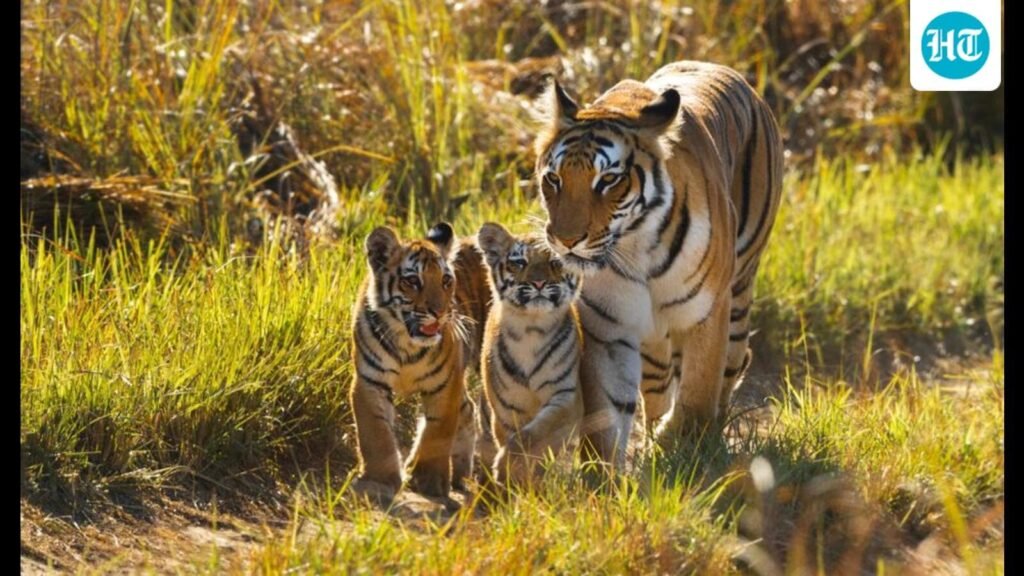
Wildlife Conservation in India has made significant strides over the past decade. The period has been marked by Ambitious Initiatives At Preserving Species and Restoring Degraded Habitats.

According to the India State of Forest Report 2023, The Country’s Total Forest and Tree Cover Increased By 1,445 SQ KM, Bringing Green Cover to 25.17% of its land area – Comprising 21.76% FOREST COVER and 3.41% Tree Cover – Since 2021. According to Food and Agriculture Organization (FAO) State of World’s Forest 2024India Ranks Third Globally In Average Annual Forest Area Gain, Adding an impressive 266,000 hai each year from 2010 to 2020. According to fao’s Global Forest Resource Assessment 2020.
On the protected-area front, India now maintains 1,022 protected areas, Encompassing 178,640 sq km-or 5.43% of of its geographic territory — which incordes nuclear Parks, Wildlifes Nural SanCTURES, CONSERVATION Reserves, Community Reserves, and Several of Them Enjoy the Status of Tiger Reserve and Elephant Reserves. Community and Conservation Reserves have increased from 115 in 2014 to 343 in 2024 and 37 National Parks and Wildlife Sanctuaries have been added after 2014, Making for 2014, Making for a Total of 106 National Parks and 573 Wildlifle Sanctuaries. To date, 474 eco-sensitive zones have been established across India. This Deliberate Expaniation of Formal Protection AlongSide AFFOTATION EFFORTES AFFORTES AFFORTS A DUAL Strategy – Securing Habitat for Wildlife and Restoring Green Cover.
A Strong Legislative Framework Was Establed to Protect Biodirsity during this period. In 2022, The Wildlife (Protection) Amendment Act was passed, implementing cits obligations, rationalising speech classification, and enhancing sancilion sanctuary governance by inculiding Gram Sabha Consultations in the Management. The modi government has also prioritized the formulation and execution of the National Biodirsity Action Plan (NBAP), Emphahsing The Importance of Local Involvement in Conservation Eforts.
A Notable Success in the Realm of Conservation has been the resurgence of iconic species. India is the first country to prepare a checklist of its 102,718 Species of Fauna in the 10 bigeographic zones of the country. The population of the tiger, which once faceed extraction, has seen a commenable rebound. As per the 2022 countrywide population estimation, the number of tigers have increased by over 30% in the last decade. With 3,682 tigers, India is now home to 70% of the global wild tiger population. India’s amrit kaal ka tiger vision (tiger@2047) – unveiled during the 50th anniversary of project tiger in April 2023 – Establishes an ambitious strategy to shooting all potent tiger habitants Cover, Integrate Core, Buffer and Corridor Areas, And Mobilise Green Investments, Multi-Ministry Coordination, and EcoSySystem-Based Climate Resilience Through a Unified Approach Accounting Acroses, State Local Levels.
Lions, Too, Constitute a Remarkable Conservation Success Story. The May 2025 Census Recorded 891 Asiatic Lions, Marking A Significant Growth of 32% Since 2020. At 13,874 animals, leopards also have a stable population. India is the third-largest range country for snow leopards, with 718 of Them Spread Across the Himalayan and Trans-Himalayan Region. The snow leopard population assessment in India program covered almost 70% of the potential habitats. Recognizing the importance of conserving the animal as a keystone speech in high-altitude Himalayan ecosystems, India launched project snow leopard by involving local commants, state governments, Conservation partners.
The Ambitious Reintroduction Initiative Under Project Cheetah Has Marked The Return of Cheetahs to India after their extraction in 1952. The first batch of eIIGHT AFRICAN CHEETHS from Namibia was reeceed inteal Park, Madhya Pradesh, in September 2022. This first intercontinental will-to-will translocation of any speech in the world. This was followed by the Arrival of Another 12 Cheetahs from South Africa in February 2023.
Project dolphin, launched in 2020, achieved landmark success with the first-Eve Comprehensive River Dolphin Survey Across Eight States, Revealing An Estimate 6,327 dolphins across the ganga, Brahmaputra, and Indus River Systems, which is more than 90% of the global population of the endanged gangs river dolphin. The project also Piloted India’s Landmark Satellite Tagging of the Ganges River Dolphin in Assam, A Transformational Step that will enhance our neglectanding of dolphin ecology and inform Conservation measures.
India has also achieved a Remarkable Milestone by expanding its network of ramsar-designated wetlands from just 26 in 2014 in 2014 to 91 by mid-2025, Making it the country with the countly with the Most Sites in ASIA and Globally. With 91 ramsar sites covering 1.35 Million Hectares, India Champions Wetland Conservation.
India has also made remarkable program over the last decade in adopting Smart green linear infrastructure to Safeguard Wildlife. The NH-44 upgrade through pench tiger reserve in central India introduced nine carefully designed underpasses and overpasses-Now used by at Least 18 Species and Leoparding-INCLUDING TIGERS and Leoparding- Demonstruating a 240% increase in wildlife crossings with three years.
This Approach has Since Been Mainstreamed: The Samruddhi Expressway, India’s First Green Highway, Includes Multiple Wildlife Bridges and Underpasses Planned In Consultation with the Wildlife Institute Of India, an autonomous institution of the union ministry of environment and forests, for future monitoring, and the forthcoming delhi -dehradun expressway features asia’s long -corridor (14 km) Rajaji National Park, Integrating Elevated Corridors and Underpasses to Facilitate Safe Animal Movement. These projects reflect a National Shift Embedding Biodirsity Safeguards Into Road and Railway Design.
Looking Ahead, The Climate Crisis Poses a Significant Threat to Wildlife Habitats. Addressing these challenges requires Sustained Commitment and Innovative Solutions. However, the Foundation Built Over the Past Decade Provides Hope and Optimism.
Bhupender Yadav is union cabinet minister for environment, forest and climate change. The views expressed are personal




